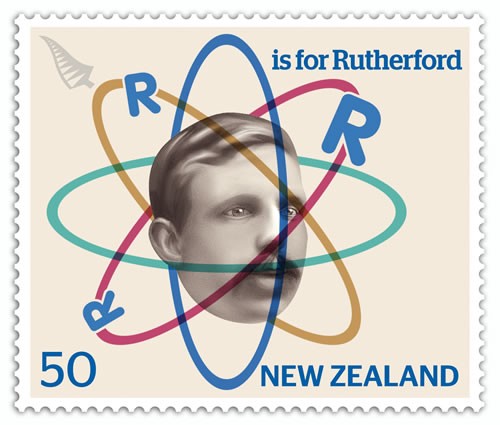
Ernest Rutherford, one of the world's greatest scientists, features in The A to Z of New Zealand stamp series produced by New Zealand Post in 2008.
His biographer, John Campbell, claims Rutherford 'is to the atom what Darwin is to evolution, Newton to mechanics, Faraday to electricity and Einstein to relativity.' Although he was a physicist, Rutherford was awarded the Nobel Prize for Chemistry in 1908 for his work on the transmutation of elements and the chemistry of radioactive substances. Campbell summarises his achievements:
Through brilliantly conceived experiments, and with special insight, he explained the perplexing problem of radioactivity as the spontaneous disintegration of atoms (they were not necessarily stable entities as had been assumed since the time of the ancient Greeks), he determined the structure of the atom and he was the world's first successful alchemist (he converted nitrogen into oxygen). Or put another way, he was first to split the atom.
Smashing the atom
On 10 September 2008 the world's most powerful particle accelerator – the Large Hadron Collider – was started up. Within the LHC's circular tunnel, 27km in circumference, beams of protons will be accelerated to up to 99.999999 per cent of the speed of light. When they smash together, they will generate concentrations of energy resembling those that occurred during the first trillionth of a second after the Big Bang.
The LHC is the latest in a long tradition of particle accelerators used to explore the building blocks of matter and the forces that act between them. This tradition was begun by Rutherford nearly 100 years ago when in 1909 he revealed the structure of the atom by firing alpha particles at a thin gold foil.


Community contributions